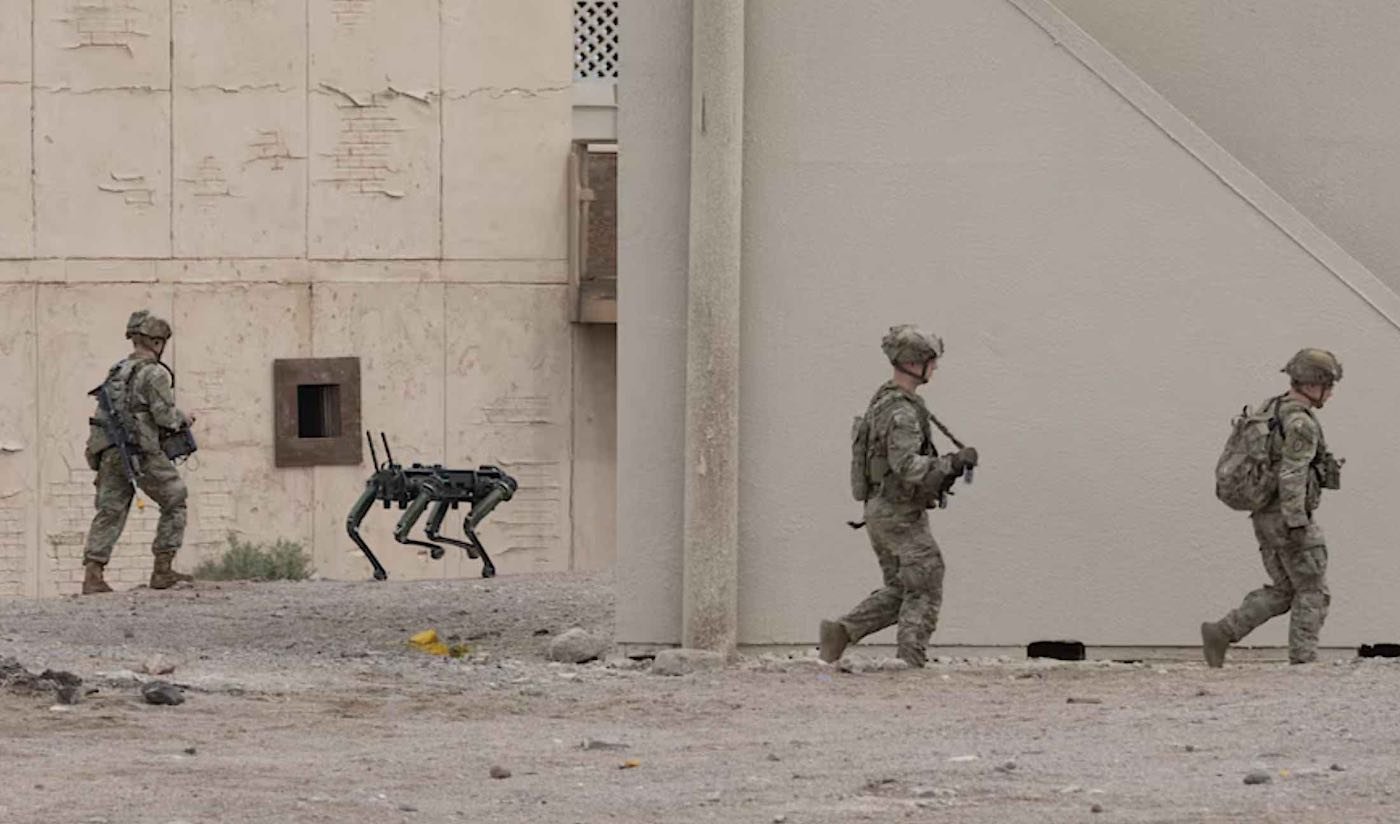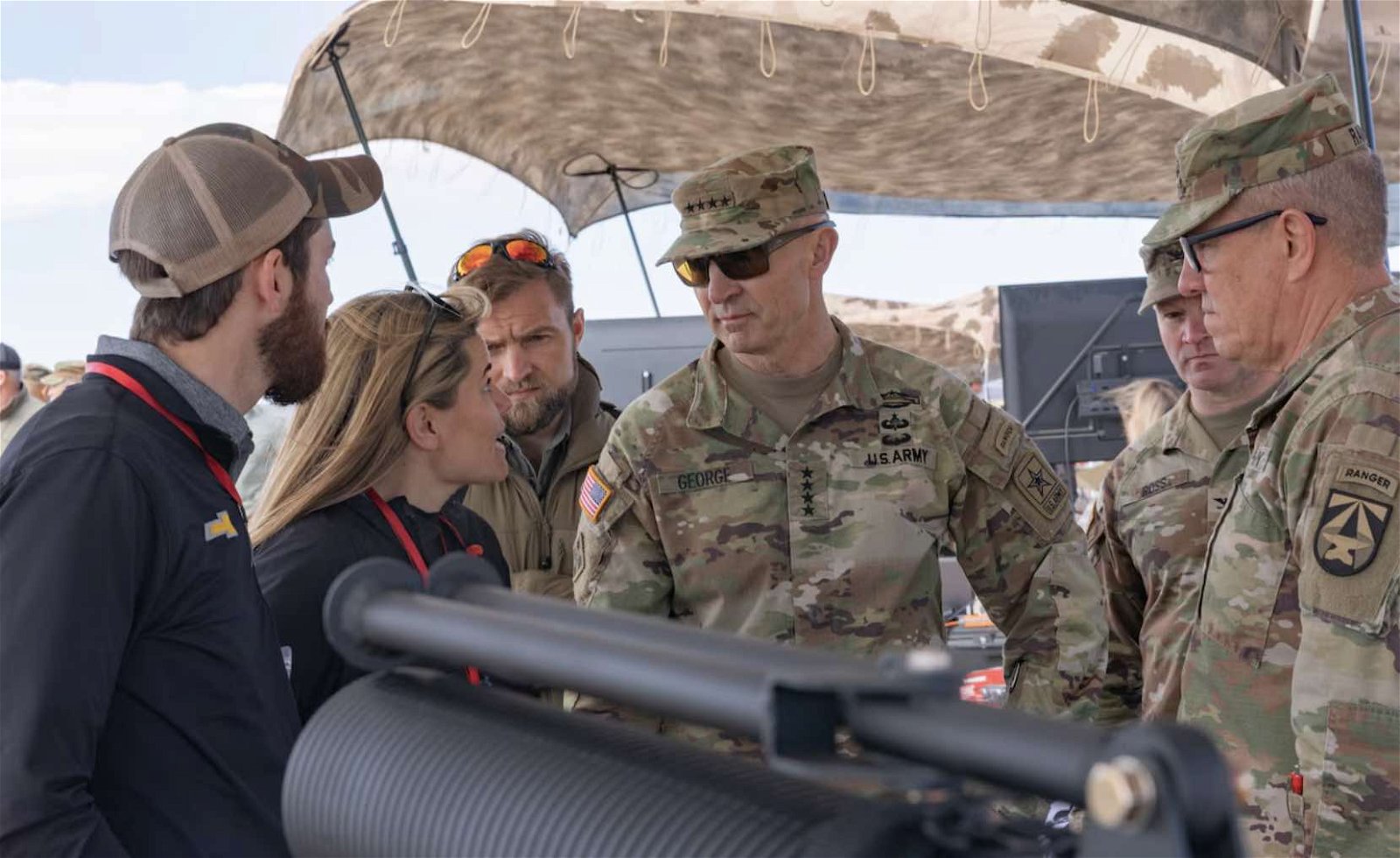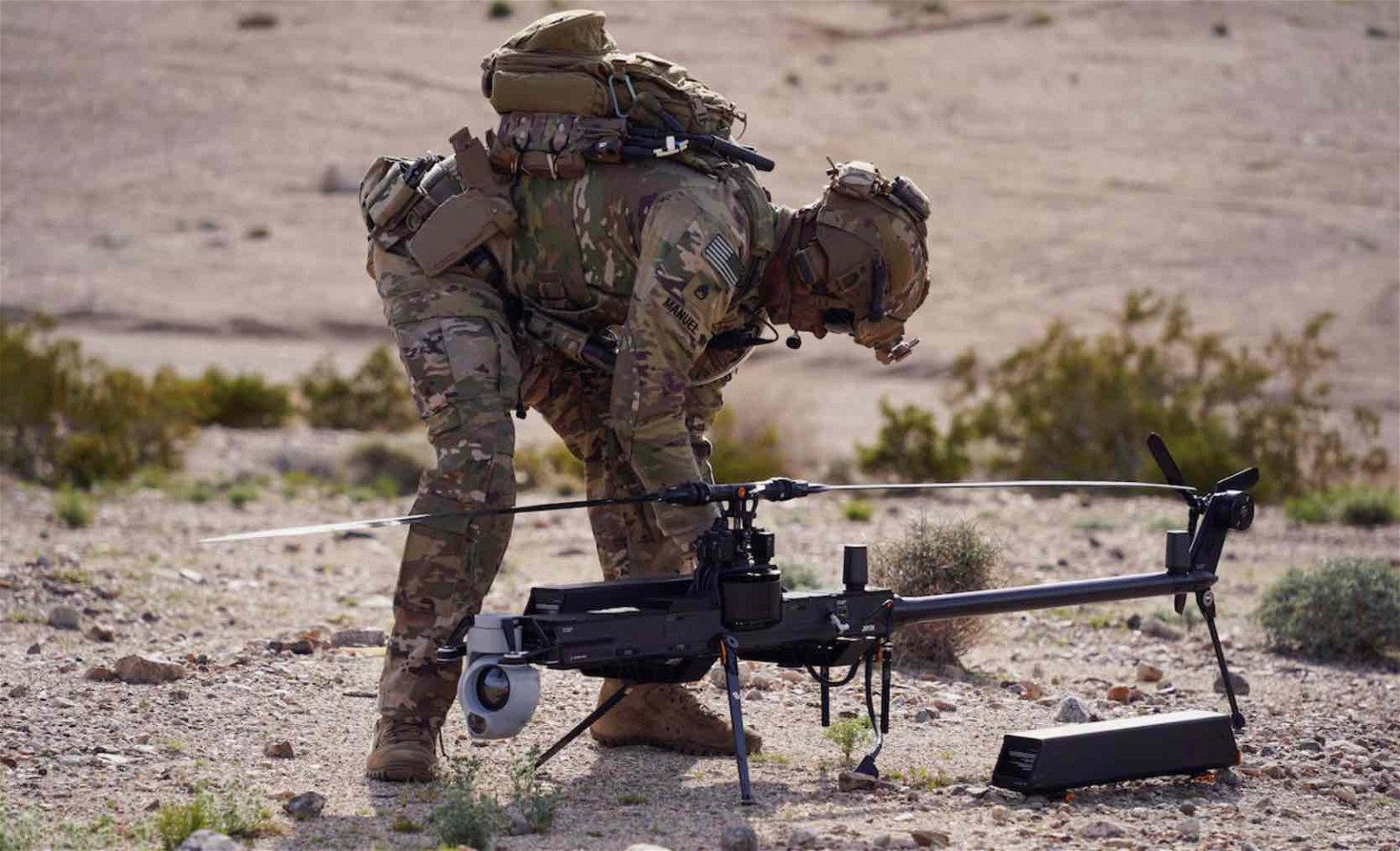

Welcome to this week’s Intelligence Brief… following a recent series of experiments involving future warfighting capabilities under what the Department of Defense calls Project Convergence, the U.S. Army is looking ahead to the battlefield environment of tomorrow. In our analysis this week, we’ll be looking at 1) what recent testing has revealed about the future of Army operations, 2) a look at Project Convergence and what it entails, and 3) what the recent experiments reveal as far as forecasts for the battlefield of tomorrow.
Quote of the Week
“Technology is moving really fast.”
– Army Gen. Randy George
Latest News: Recently at The Debrief, we reported on how a team of researchers from Kobe University used an AI neural decoding program to successfully predict mouse movements with near-perfect accuracy. Elsewhere, NASA is gearing up to study strange phenomena during next month’s full solar eclipse; here’s everything you need to know about the landmark celestial event. All of our recent stories can be found at the end of this week’s newsletter.
Podcasts: In the podcast department this week, over on The Debrief Weekly Report, Kenna and Stephanie get Shakespearean and discuss a mysterious document written by the Bard of Avon’s sister. Meanwhile, on The Micah Hanks Program, I examine curious sightings of “mystery aircraft” from over the decades that could point to a secret history of American military aviation. You can subscribe to all The Debrief’s podcasts on our Podcasts Page.
Video News: On the latest installment of Rebelliously Curious, Chrissy Newton is joined by Agnieszka Pilat, a Polish-American artist and writer working at the intersection of robotics, Artificial Intelligence, and fine art. You can check out this interview and other great content from The Debrief on our official YouTube Channel.
Now, it’s time to shift our attention to Project Convergence and how it is setting the pace for the future of the U.S. Armed Forces and their operations.
The Future of Warfighting
The integration of advanced new technologies is reshaping the way the U.S. armed forces will operate on the battlefield of the future, both on land, and in the air.
“We’ve all seen how the battlefield is changing,” according to Chief of Staff of the Army Gen. Randy George, who recently expressed his views on how the military is changing and adapting to the implementation of advanced systems that include AI and a range of other technologies.


“We know that machines can do a lot of things right now much more effectively and much cheaper, and we’re going to have to incorporate them into our formations,” George said shortly after returning from his observations of Project Convergence Capstone 4 (PC-C4), an experiment involving the combined participation of the U.S. Army, Navy, Air Force, Marines, and Space Force.
The experiment was undertaken at Camp Pendleton, California, and the Army’s National Training Center in Fort Irwin, California, beginning in February and concluding on March 20. More than 4,000 U.S. service members and military civilians participated, as well as a range of other joint and multinational force members who engaged in experiments with the latest communications and operations systems and to conduct battlefield maneuvers that will likely represent the future of warfare.
Project Convergence
Project Convergence is a joint multinational experiment designed to allow members of the armed forces to perform tests with new technologies at the operational level that “will inform the integration of modernization capabilities and formations at multiple echelons in the future operating environment,” according to a DoD fact sheet.
The recent completion of Capstone 4 represents the largest two-phase experiment the Army has conducted to date, under the direction of the Army Futures Command and its future operational environment assessment and joint warfighting concepts.
“Joint experimentation allows continuous learning to inform future readiness and modernization activities and helps to inform reliable network systems, data-driven decisions and joint warfighting concepts,” the DoD fact sheet states.
Capstone 4 focused on technological experiments that will help facilitate integration, adaptability, and overall synchronization of the individual military components as a joint force and enable all-domain warfare.
Building the Military of Tomorrow, Today
“Technology is moving really fast,” George said following his observations of PC-C4, which he said “kind of gave us an opportunity to see just how we could do that.”
One of the experiments conducted during PC-C4 involved training in a simulated urban environment. Soldiers were accompanied by unmanned aircraft systems (UAS) and robotic dogs to assist in collecting information about the environment in real-time.


Army Staff Sgt. Stetson Manuel assembles the Ghost-X Unmanned Aircraft System during the human machine integration experiment for Project Convergence Capstone 4 (Credit: Army Staff Sgt. LaShic Patterson/U.S. Army).
George said the training operation that united the robotic systems with the light infantry warfighters “was all tied together by a very simple command and control network that was easy to use and intuitive.”
“This isn’t about testing something in a showroom,” George said. “This is actually getting to use [the technology] where they’re going to use it … and I think that’s where we do our best learning.”
Although the timeline for implementing new technologies that were used during Project Convergence is still somewhat uncertain and involves budgetary and other considerations, George said that the Army does “have a sense of urgency” that is driving the timeframe for their integration.
“I think everybody is anxious to transform,” George said.
During the experiments in early March, Chief Warrant Officer 5 Jeramy Cosner, the chief technology officer of AFC’s Network Cross-Functional Team, which participated in the PC-C4 exercises, said that George is “driving us to provide leaders what they need on the changing battlefield — network and command and control systems that are simple, mobile, low signature and adaptable.”
“Project Convergence helps us figure out what is possible to get there,” Cosner said.
That concludes this week’s installment of The Intelligence Brief. You can read past editions of The Intelligence Brief at our website, or if you found this installment online, don’t forget to subscribe and get future email editions from us here. Also, if you have a tip or other information you’d like to send along directly to me, you can email me at micah [@] thedebrief [dot] org, or Tweet at me @MicahHanks.


Here are the top stories we’re covering right now…
- Event Horizon Telescope Captures Rare Glimpse of a Cosmic ‘Monster’ in the Heart of the Milky Way
New imagery obtained by the Event Horizon Telescope (EHT) collaboration is offering an unprecedented look at the dynamics of the supermassive black hole Sagittarius A*, revealing its strong and organized magnetic fields.
- Astronomers Using the European Southern Observatory’s Very Large Telescope Spot Tiniest ‘Starquake’ Ever
An international team of astronomers studying orange dwarf stars has recorded the tiniest starquake, or stellar oscillation ever.
- Natural Alternatives to Weight Loss Drugs Ozempic and Wegovy Identified by AI to Remain Secret For Now
A team of computer scientists say they have identified two natural alternatives to weight loss medications like Ozempic, Wegovy and Zepbound.
- Breakthrough in Brain-Computer Interfaces: Scientists Use AI Neural Decoding to Predict Mouse Movements with 95% Accuracy
Breakthrough AI neural decoding process able to predict mouse movements with 95% accuracy, advancing brain-machine interface technology.
- 2024 Total Solar Eclipse Brings NASA New Opportunities to Study the Sun and Earth’s Mysteries
NASA officials said on Tuesday that the space agency is planning to conduct a wide array of science experiments during the full solar eclipse on April 8, 2024, that will focus on gaining insights into a mysterious region of the Sun and how it affects the Earth.
- Sunlight Powers This New Self-Cleaning White Paint That Also Cleans the Air
Potentially revolutionary self-cleaning white paint that never fades and also cleans the air uses the power of ordinary sunlight.
- Exposed: South African Government Website Published Personal Data of its Lawmakers
Members of the South African parliament have had their personal contact information publicly listed on the parliament’s official website, exposing them to a security risk.
- Powerful Geomagnetic Storm Could Lead to Aurora Sightings, Space Weather Experts Say
Appearances of the aurora borealis are expected to be likely in parts of North America on Monday night, following an intense geomagnetic storm that struck the Earth on Sunday.
- NASA’s Europa Clipper Mission May Soon Discover Alien Life. Here’s What’s Making Experts So Confident.
Laboratory experiments show a NASA mission planned for launch as soon as this October could be the first ever to detect alien lifeforms.
- A Rare Once-in-a-Generation Total Solar Eclipse Occurs on April 8: What to Expect, and Safety Measures to Take
On April 8, 2024, North America will be treated to a rare total solar eclipse. Here’s how to prepare for this once-in-a-generation event.
- New Study Reveals the Hidden Health Cost of Video Games: What Every Hardcore Gamer Needs to Know
New research explores the undiscussed physical health risks associated with video games and being a hardcore gamer.
- DARPA’s Lunar Railroad is the Latest Saga in the DoD’s Mysterious Obsession with the Moon
DARPA’s plans to build a lunar railroad are the latest manifestation of the DoD’s strategic obsession with the Moon.
- NASA Launches BurstCube on New Mission to Study Mysterious Short Gamma Ray Bursts
NASA has just sent BurstCube on the first leg of its scientific mission to study the most powerful explosions in the known universe.
- Redefining Art Through Robotics and AI
Chrissy Newton is joined by Agnieszka Pilat, a Polish-American artist and writer working at the intersection of robotics, Artificial Intelligence, and fine art.
- Digital Research Just Uncovered A Family Secret of the World’s Most Famous Playwright William Shakespeare’s Unknown Sister Penned A Curious Religious Tract
A University of Bristol academic has uncovered that a mysterious religious tract found in the attic of William Shakespeare’s Stratford home in the mid-1700s was written by the famous playwright’s unknown sister, Joan Shakespeare.
- Archaeologists Discover 1,000-Year-Old Ice Skate Made of Animal Bone
Czech archaeologists performing a rescue dig in the basement of a local house say they have discovered a 1,000-year-old ice skate.
- U.S. Air Force Confirms Speculations Over Recent AGM-183A Hypersonic Missile Test
We examine the recent USAF test of an AGM-183A hypersonic missile, and why it marks a pivotal moment for U.S. weapons technology.
- Darkness in the Desert
This week, we examine an unsettling series of alternative hypotheses about what might have occurred in the New Mexico desert in 1947.
- Uncanny “Adaptive Durability” Makes This Strange New Material Stronger Every Time You Hit It
Engineers have invented a seemingly magical material possessing ‘adaptive durability’ that makes it stronger after repeated impacts.
- African ‘Fairy Circles’ That Once Baffled Scientists Point to Mysterious ‘Swarm Intelligence’ in Plants
Mysterious “fairy circles” in Africa that have long baffled scientists aren’t the work of angry gods after all, but something even stranger.
- UAP Advocates Rally at Senator Schumer’s Office in New York as Efforts Mobilize Across 45 States
Advocates for the disclosure of U.S. records involving UAP will attend a rally in New York this week in support of the transparency efforts of Senator Chuck Schumer.
- Excavations of 7,000-Year-Old Underwater Village Reveal Use of Advanced Nautical Technology
Excavations at a 7,000-year-old village that is currently underwater reveal the use of advanced nautical technology by ancient sailors.
